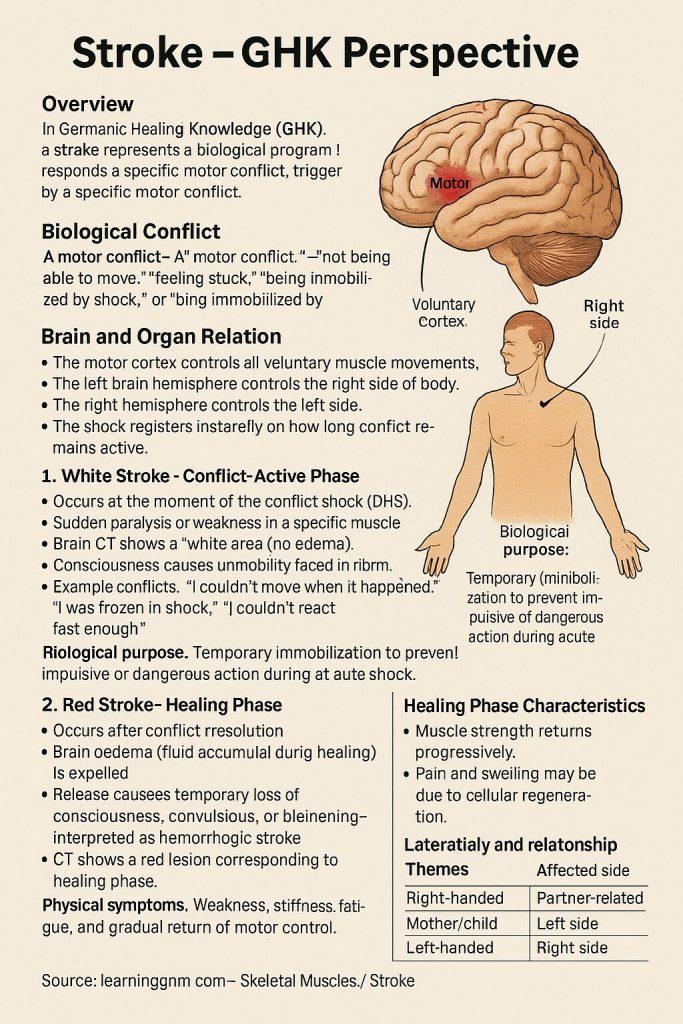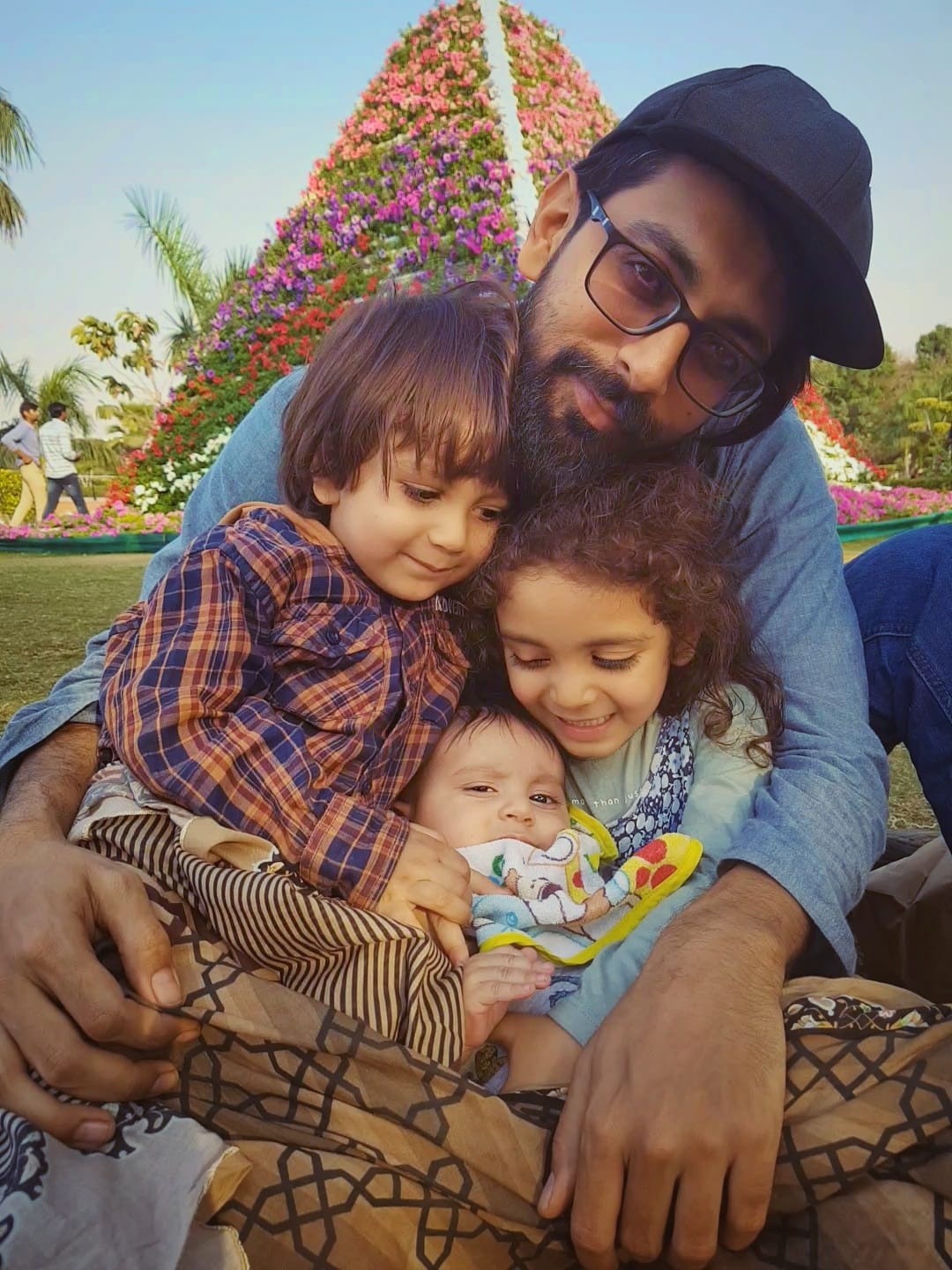🧠 Stroke — GHK Perspective
(Based on learninggnm.com)

Overview
In Germanic Healing Knowledge (GHK), what is commonly called a “stroke” represents a biological program controlled from the motor cortex of the cerebrum. It is not viewed as a random vascular event, but as a meaningful process triggered by a specific motor conflict.
Biological Conflict
Conflict type:
A motor conflict — “not being able to move,” “feeling stuck,” “being unable to react or escape,” or “being immobilized by shock.”
This shock registers instantly in the brain as a Dirk Hamer Syndrome (DHS) and impacts the motor cortex, leading to corresponding changes in muscle function.
Brain and Organ Relation
- The motor cortex controls all voluntary muscle movements.
- The left brain hemisphere controls the right side of the body, and the right hemisphere controls the left side.
- Which side is affected depends on handedness and the relationship theme (mother/child or partner-related).
The Two Types of Stroke in GHK
1. “White Stroke” — Conflict-Active Phase
- Occurs at the moment of the conflict shock (DHS).
- Characterized by sudden paralysis or weakness in a specific muscle or region.
- The brain CT shows a white area (no edema).
- The person remains conscious but cannot move the affected limb.
- Duration and intensity depend on how long the conflict remains active.
Example conflicts:
- “I couldn’t move when it happened.”
- “I was frozen in shock.”
- “I couldn’t react fast enough.”
Biological purpose:
Temporary immobilization to prevent impulsive or dangerous action during acute shock.
2. “Red Stroke” — Healing Phase (Epileptoid Crisis)
- Occurs after conflict resolution.
- The brain oedema (fluid accumulated during healing) is expelled.
- The release causes temporary loss of consciousness, convulsions, or bleeding — which mainstream medicine interprets as a hemorrhagic stroke.
- CT shows a red lesion corresponding to the healing phase.
- After the crisis, edema recedes and recovery follows.
Physical symptoms:
Weakness, stiffness, fatigue, and gradual return of motor control.
Healing Phase Characteristics
- Muscle strength returns progressively.
- Pain and swelling may occur due to cellular regeneration.
- The healing phase can be misinterpreted as disease progression if the underlying conflict is not understood.
Laterality and Relationship Themes
| Handedness | Conflict theme | Affected side |
|---|---|---|
| Right-handed | Partner-related | Right side |
| Right-handed | Mother/child-related | Left side |
| Left-handed | Partner-related | Left side |
| Left-handed | Mother/child-related | Right side |
Additional Notes
- A white stroke (ischemic type) corresponds to the conflict-active phase.
- A red stroke (hemorrhagic type) corresponds to the healing phase.
- The same biological program can manifest differently depending on timing and intensity.
- Fear of paralysis or diagnostic shock may trigger secondary conflicts, prolonging or worsening symptoms.
Biological Meaning
The process serves to immobilize the individual during a moment of overwhelming shock. After the conflict is resolved, the body undergoes restoration of muscle function.
Once the biological program completes, full recovery of motor ability is possible, as the tissue and neural pathways return to normal function.
Reference
Source: learninggnm.com – Skeletal Muscles / Stroke

